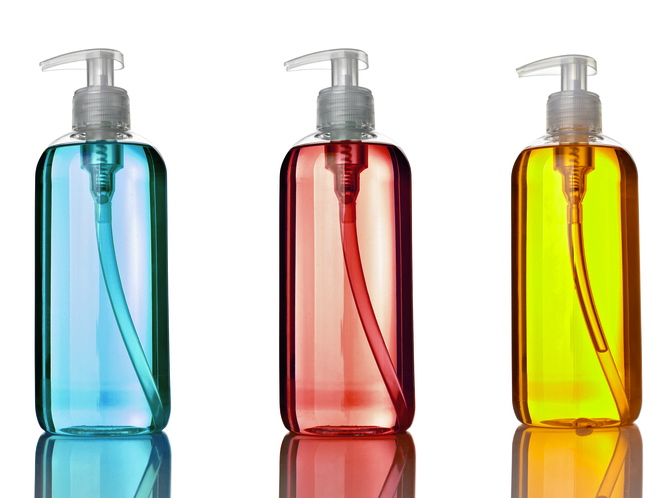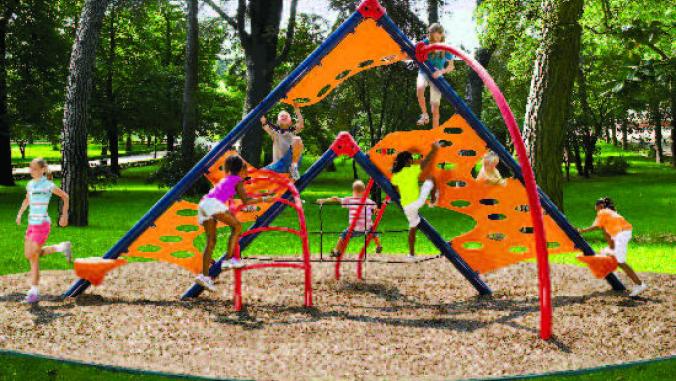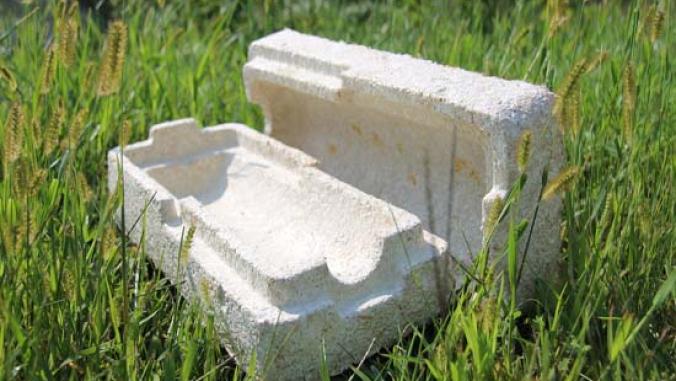A closer look behind the walls of product transparency
<p>It's not as easy as it may seem for a manufacturer to disclose to the public a complete list of all product ingredients.</p>

The U.S. EPA estimates that people are spending 90 percent of their time indoors. The winter season (when we’re spending even more time curled up on the couch) is a perfect time to ask ourselves if we are living in a healthy indoor environment. Do we really know what is in the products that surround us all day long?
Most people do not know if their sofa foam contains bioaccumulative flame retardants or if their wooden furniture is offgassing carcinogenic fumes. Fortunately, many players in the green building industry (including building occupants, architects, building managers, specifiers and product manufacturers) are now demanding that we take a peek behind the walls (and all around us) to know what toxins might be lurking in our building products.
The U.S. Green Building Council (USGBC) is leading the way by demanding transparency from product manufacturers about the safety of building materials and ingredients. At the Greenbuild Expo held last November in San Francisco, USGBC President & CEO Rick Fedrizzi laid down this challenge in the opening plenary, “If you claim to be the best, if you claim to be healthier, [then] prove it! Green building is about transparency and accountability.” The USGBC is rewarding product manufacturers who can answer this call with a greatly expanded offering of points in the draft of the next LEED standard (Version 4) for public disclosure of product ingredients, healthier products, responsible sourcing, and life cycle considerations.
The challenge of transparency
It is not as easy as it may seem for a manufacturer to disclose to the public a complete list of all product ingredients. Manufacturers may not actually know everything that is in their products, and they need cooperation from the entire supply chain in order to inventory all the ingredients. Suppliers of chemicals, plastics and other component materials are understandably protective of their proprietary formulations, and there is little incentive for them to share their ingredients with their customers.
Current regulations do not require suppliers to disclose their full formulations. Often the only available information about product ingredients can be found in a Material Safety Data Sheet (MSDS), which is a form required by Occupational Safety and Health Administration (OSHA) for the disclosure of certain hazardous chemicals. However, this one standard does not include all of the chemicals of concern that may be in building products. Furthermore, many chemicals are harmful to consumers below the OSHA reporting threshold of 1 percent, but it’s not required to report the amount of the chemical in any given product in a MSDS.
Some manufacturers are waiting until government regulations or a critical mass of consumers demand full transparency from all manufacturers. Without that even playing field, many are afraid that disclosing their chemical hazards will put them at a disadvantage compared to a competitor who doesn’t disclose anything. In this case, consumers are then forced to choose between a product with a known hazard or one without any detailed ingredient information.
In this dark age of product information, many trailblazing companies are setting themselves apart by disclosing everything that is in their products. Product manufacturers, such as Construction Specialties, are earning the trust of consumers by tearing down the walls of secrecy and letting us all in. Construction Specialties worked with Perkins & Will to develop a nutrition label that discloses not only the ingredients in the product but also the product’s potential impacts to the environment (including material sourcing & recyclability, packaging content, and water & energy use).
Being an early adopter of transparency can also demonstrate a company’s commitment to change and finding healthier ingredients. Method, a cleaning products company devoted to green chemistry, lists every ingredient they use on their website. In a piece published on GreenBiz, Method’s (now former) director of sustainability Drummond Lawson wrote, “We disclose the detailed composition of our products and the practices used to make them. We do this because we feel that transparency is the basis for authenticity and meaningful commitment to social or environmental change.”
Photo of colored bottles provided by Picsfive/Shutterstock
Others in the building product industry are beginning to follow the lead of companies like Construction Specialties and Method. In the past few months, several new tools and programs have been released to assist manufacturers with the challenge of inventorying and disclosing ingredients in their products. The combination of new tools and increasing manufacturer participation is enabling builders and building owners to begin to answer questions about what makes up their buildings. They can better understand the building materials they choose and make the spaces we are living in healthier.
Health Product Declaration
The official Version 1 of the Health Product Declaration Open Standard was just recently released by the non-profit Health Product Declaration Collaborative at the Greenbuild Expo last November. The Open Standard is a format that systemizes reporting language to enable transparent and standardized self-disclosure of information regarding building product content and associated health information. If widely adopted, this tool would allow building designers, specifiers, owners and other users to accurately weigh the hazards of comparable building products. The HPD Open Standard sets the benchmark for full disclosure at greater than 99 percent of intentional ingredients and inclusion of known residual ingredients. Manufacturers who can’t achieve full disclosure can still use this format for reporting. However, they are required conduct a screening against a set of chemical hazard for each listed ingredient, as well as to list all associated health hazards. While there is no official database to find these product declarations, manufacturers can be contacted for that information.
Declare
Declare is an initiative of the International Living Future Institiute that was launched in October 2012. This program for building materials aims to provide self-disclosed information about where a product came from, what it is made of and where it goes at the end of its life. Manufacturers who volunteer to participate must list greater than 99 percent of ingredients in their product by chemical name and CAS number, compound, or organic material name. Each chemical is screened against the Living Building Challenge (LBC) Red List and chemicals of concern are flagged. Anyone can go to the International Living Future Institute website to view the labels and full ingredient lists of the participating manufacturers.
Cradle to Cradle Certified
The Cradle to Cradle Products Innovation Institute released Version 3 of the Cradle to Cradle CertifiedCM Product Standard at Greenbuild Expo 2012. This multi-attribute program is a third-party product certification that evaluates products in five categories (material health, material reutilization, energy and carbon, water stewardship and social fairness). Unlike the tools that rely on a manufacturer’s self-disclosure of known ingredients, an assessment body helps manufacturers collect formulations and proprietary ingredients throughout the entire supply chain that would not otherwise be accessible. Disclosure of ingredients increases with the level (ranging from 75 percent at bronze level to 100 percent at gold & platinum levels). Each ingredient is evaluated for its toxicity to human and environmental health and no certified product can contain chemicals on the banned list. Because of the inclusion of proprietary formulations in the inventory process, full disclosure to the public is not required. A third-party assessor inventories and evaluates the formulation and product impacts to people and the planet, and the resulting scorecard is made available. The standard can also be used as a tool for further self-disclosure. It also provides guidance on reporting materials, inputs subject to review, how to determine the absence of banned list chemicals, how to account for recycled content and how to collect material ingredient data.
In the building community, the expectation of transparency is spreading. Participation in these types of programs is an important part of the LEED and Living Building Challenge certifications. Manufacturers who provide ingredient disclosure of their products are being given preferential consideration by large property owners (such as Google and JLL) and large architecture firms (such as HOK and Gensler).
More and more manufacturers are pulling back the curtain to let everyone see what is in their products. There are now more tools available to assist in conducting a thorough inventory of ingredients and to support those who will disclose their formulations. Transparency alone does not guarantee that a product is safe and healthy, but it is the first step.
Manufacturers who apply the Cradle to Cradle methodology follow the process inventory, assessment and optimization. A complete and accurate inventory of product ingredients enables thorough hazard assessments of chemicals in a product. With a clear understanding of a product’s hazards and exposure risks, a manufacturer can make informed decisions about optimizing the safety of ingredients and prioritizing formulation improvements. Finding healthier ingredients may require further research and development or innovation in green chemistry. We will be exploring these topics in our next blog posts.






